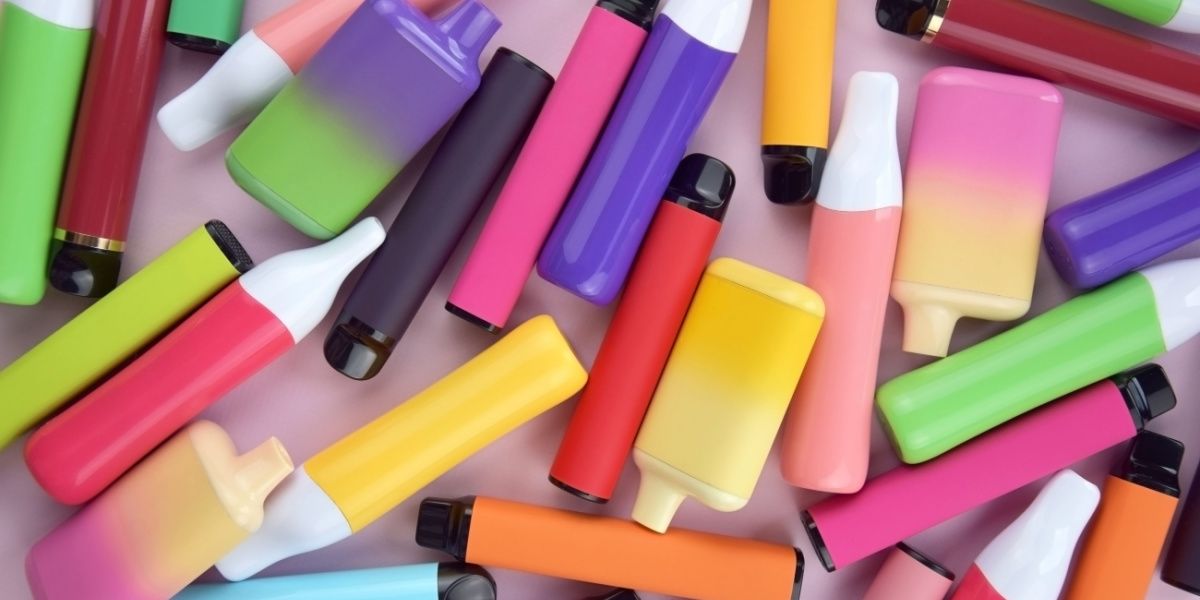In the United States, the use of vapes is increasing dramatically, especially among young people. In 2024, it was estimated that around 1.63 million (5.9%) middle school and high school students used vapes. [1]
Alongside rising vape usage, the U.S. is struggling with an opioid epidemic, also affecting more and more younger people. In recent years, concern has grown about the potential use of opioids, including fentanyl, as an additive to vapes.
This article examines the evidence for fentanyl use in vaping, alongside discussing the significant health risks that this presents.

What is fentanyl, and why is it dangerous?
Fentanyl is a synthetic opioid drug that is primarily used to treat severe pain. It is considered 50 to 100 times more potent than morphine. Once overprescribed by doctors, its use is now tightly controlled due to its significant dependence and abuse potential. [2]
The illicit use of fentanyl has skyrocketed, with many people using it for its euphoric effects. However, this use comes with significant health risks, including: [2]
- Confusion
- Visual disturbances and hallucinations
- Drowsiness
- Low blood pressure
- Loss of consciousness
- Slowed breathing
If someone exhibits these symptoms and does not receive emergency medical intervention, they may enter a coma and pass away.
Myths vs. Facts: How fentanyl ends up in vapes
It’s important to recognize that several media reports about fentanyl being present in vapes are based on anecdotal evidence that, in some cases, has later turned out to be false. In particular, there is limited evidence to suggest that fentanyl is being placed in vape liquids by either manufacturers or distributors (including those sold illegally). [3][4][5]
However, there are well-documented cases of individuals (or people who have access to their vapes) intentionally mixing fentanyl into vape liquids. This practice is incredibly dangerous, with accurate dosing being impossible. [6]
Youth and fentanyl vaping
One of the most significant concerns about the presence of fentanyl in vape products is the accessibility and attraction of vaping to younger people. A 2024 study indicated that around 43% of school students who tried vaping reported continuing current use. [1]
Isolated media articles have reported the presence of fentanyl containing vapes in school groups. Despite questions around the reliability of evidence for these events, school boards have still taken the opportunity to warn of the risks of vaping. In particular, if vaping does occur, these products should be bought from reputable retailers to limit the risk of unwanted contamination in illicit products. [3]
Health risks of vaping fentanyl
Limited human studies have explored the effect of inhaling vaporized fentanyl. As such, we need to pull information from a mix of animal and laboratory data studies, as well as information about what we know about fentanyl and vaping separately.
Studies on mice indicate that vaporized fentanyl produces a potent effect within minutes of inhalation. We also know about the difficulty in accurately inhaling a consistent ‘dose’ of vape liquid and the ease with which vapes can be continually and habitually puffed. As such, fentanyl laced vapes present a considerable risk of rapid accidental overdose. [7][8]
Some human studies have explored the use of nebulized fentanyl for end-of-life patients with distressing breathlessness. Evidence suggests that the effects are similar to those of injected fentanyl, slowing breathing and heart rate, and increasing drowsiness. Notably, the doses given were tightly and reliably controlled, something which is not possible with vaping. [9]
At the end of the day, vaping fentanyl can have serious and unpredictable consequences. Of most concern, it can lead to slowed breathing, sedation, loss of consciousness, coma, and even death.
Recognizing signs of fentanyl exposure and overdose
If you suspect a fentanyl overdose, you must seek immediate medical attention. An individual who is overdosing will have abnormally small pupils (called pinpoint pupils), slowed breathing, be heavily sedated, have obstructed breathing, lose consciousness, or even stop breathing. Emergency medical personnel will need to give naloxone (Narcan) to reverse these effects. [2]
It is a common myth that you can overdose by touching fentanyl. There are no confirmed cases of this happening. However, caution should still be exercised in the presence of these substances, especially when they are vaporized in the air after being puffed out from a vape. [10]
Prevention and treatment resources
Although evidence indicates that vaping may be safer than cigarette use for those trying to quit, vaping still comes with its own set of health risks. These products are not considered safe, especially for young people. For free help with quitting, visit the Centers for Disease Control (CDC) website or call 1-800-QUIT-NOW.
Fentanyl is a highly dangerous substance that can easily lead to overdose and death. Contact your healthcare provider today to discuss treatment options. Alternatively, visit our rehabilitation provider directory for information on services available near you.



-blog-detail.jpg?v=1723557318)
